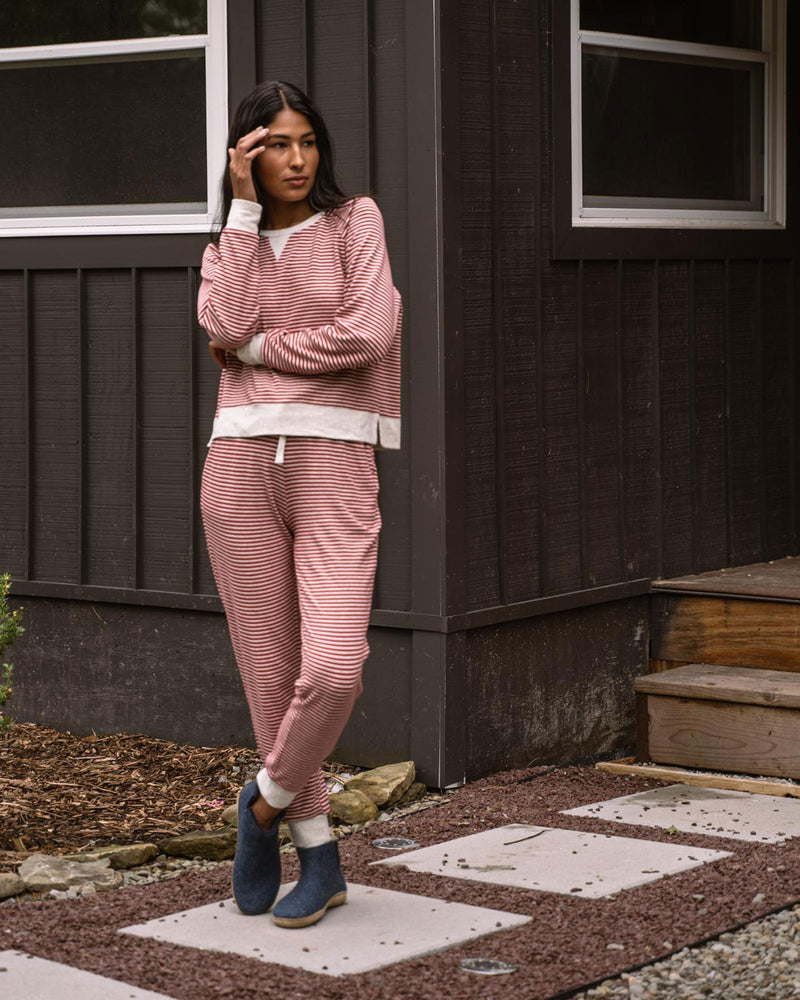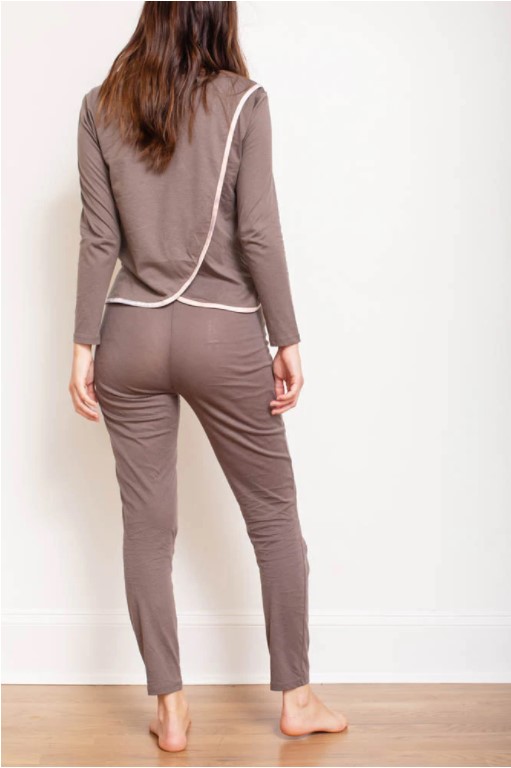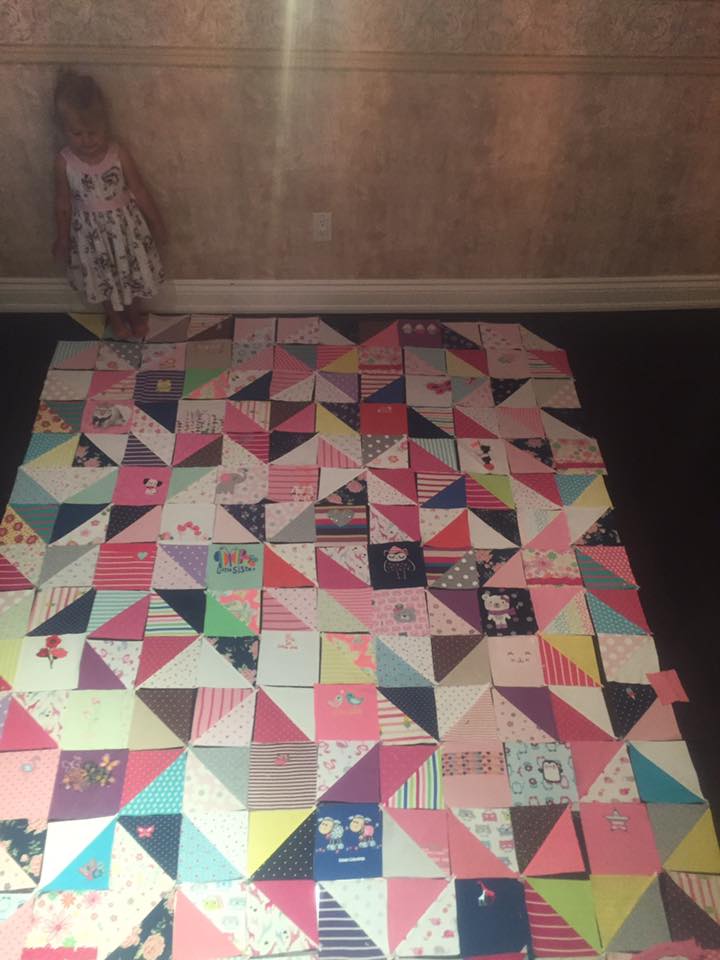The fashion industry is one of the worst polluters. From the dyes in clothing, the pesticides on crops, or the huge amount of water used to manufacture clothing, looking at the way we wear our clothes matters.
Choosing to wear clothing more sustainably doesn’t have to be hard. Taking a look at how you currently wear your clothes can give you insight into some of the ways you can stand to improve. Do you buy new clothes often? What do you do with your old clothes? What types of styles do you usually buy?
Check out 20 ways to wear your clothing more sustainably and feel better about the small steps you’re making to make our world more sustainable. This article may contain affiliate link in which I may earn a small commission if you buy something. Please note that this does not affect my recommendations to support these companies.
1. Flee Fast Fashion

There is a reason this is number one. Fast Fashion is a HUGE environmental problem. Adding 17 million tons to landfills every day, fast fashion is responsible for 8% of all carbon emissions. Cheap fashion created for a season is a new concept in the last few decades that needs to stop.
Fast fashion brands often make clothing that withstands fewer washes, falls apart easily, and is manufactured in countries that pay pennies for hours of work. Fast fashion contributes to unsustainability on many fronts: polluting our waters, paying workers unfair wages, poisoning through pesticides, polluting the air, and adding to landfills. All-in-all fast fashion brands like Fashion Nova, Boohoo, Revolve, Pretty Little Thing, and Forever 21 contribute to the environmental problems from fast fashion.
To learn about some of the biggest differences between Slow Fashion and Fast Fashion, read
2. Care for Clothing Consciously

The way we wash our clothes makes a difference. Properly caring for clothing can increase the longevity of clothes, and help decrease your carbon footprint. Small amounts of microplastics from our clothing are polluting our waters and getting into the food supply. Surprisingly, many of our mainstream clothing brands are created from fossil fuels and plastics. Polyester, fleece, acrylic, spandex, and nylon are some of the worst contributors to microplastics in our waters. Washing on cold and air drying are the best practices to maintain the longevity of clothing and minimize the flaking of microscopic plastics that are too hard to trap.
To learn more about Microplastics, read
11 Rules for Addressing the Modern Microplastic Mess
Caring for clothing can also include the way you store, fold and iron your clothing. The more you care for your clothing, the greater appreciation you have for your items, and the longer you will make them last. This is one tip we can get from Mari Kondo, allow your clothes to bring you joy!
3. Avoid Mixed Fibers
We don’t really think this one through when we pick up a garment with a poly-cotton blend. On the surface mixing fibers seems like a great idea, but actually only adds to environmental problems. Polyester, made from fossil fuels, can easily be recycled when uncombined and pure. When mixed with another fiber, such as cotton, recycling polyester is impossible and the garment has no choice but to end up in landfills. Mixed fibers also do not allow for garments to easily biodegrade once sent to landfills. Cotton alone can decompose in as little as 5 months, but polyester and spandex can take up to 500 years to break down.
4. Choose Sustainable Companies
If you have the budget for it, try investing in more sustainable clothing companies. Yes, it costs more, but you are also paying someone a living wage to design, procure and sew your clothes. Garments from sustainable companies are often made with better, more eco-friendly materials, that will last longer, and look better over time. Some of the best companies to try are:






RELATED: 16 Sustainable & Organic Cotton Pajamas You Need for Every Season
5. Natural Fibers First

Fabrics that are made with plants are our best alternatives. Not only do these fibers last longer, but they are also able to decompose easily and return to the natural cycle of the earth. Natural fibers such as organic cotton, bamboo, Tencel, hemp, and linen allow your body to breathe. Most can also easily be mended when ripped or can also be repurposed. Always try to find the organic version of the fabric, meaning that harmful pesticides have not been used in the production of the garment.
6. Buy Second Hand

There are a TON of new stores online popping up every day. Not only can you have a field day shopping for fun finds at your local second-hand shop, but now you can browse from the comfort of your own home! Facebook Marketplace is also a great place to find second-hand clothes for cheap. Other online shops for second-hand clothes are threadup.com, poshmark.com, and depop.com.
Buying second-hand ensures no waste too!
To read more about The Zero Waste Challenge, click here.
7. Sell Second Hand

Even better than buying is selling. Sell your stuff and make some cash. I recently went through my closet and got rid of 40 things I never use anymore and made $100! If you want to take the time and list individual items for more money, try online stores for your go-to. If you’re looking to off-load a huge bunch of clothes, bundling on Craigslist, Kijiji or Marketplace works wonders. An oldie but a goodie is also having a good old-fashioned garage sale to sell your clothes. Rather than throwing them out, try to put a little $$$ in your pocket!
8. Check Your Footwear

This is one we rarely think about, but our everyday footwear is often made out of plastics that pollute, turn into microplastics from wear, and sit in landfills for thousands of years. Sustainable footwear is made from products that use natural fibers such as pineapple leather (YES, this is real! Check it out here https://www.ananas-anam.com/), hemp, wool, flax, eucalyptus, and more! I have mixed feelings about leather. On one side, it’s highly durable and is a by-product of the meat industry, utilizing every part of the cow. On the other hand, leather uses a ton of chemical dyes in the tanning process, which contributes to environmental pollutants. Buying leather also contributes to a demand for more meat products, which is a large contributor to greenhouse gases.
9. The $1 Wear Rule

My sister and I made this one up a long time ago but it works wonders for sustainability. Make sure that the price you pay for clothes can at least withstand the number of wears that you give that garment. For example, if something costs you $20, wear it at least 20 times. This will not only ensure that clothes are durable, but they will also make sure that you choose fashion that can withstand the test of time. This rule is especially pertinent now that we have fast fashion clothing that often cannot be washed more than 3 times without looking old, faded, and piled.
10. Find New Ways to Love Old Clothes

Pair it with something new, sew on some new buttons, hem-it, sew it more narrow, cut off the sleeves or legs… There are so many ways to make your old clothes new again. You can even use the remaining fabric to wrap gifts creatively! Often, we just get bored of our clothing, and it’s important to find new ways to love your old stuff. Practicing gratitude for our clothing can give you a new perspective on what you have and how to love your own clothes.
11. Host a Swap Party

This one is really fun! Hosting a swap party after the pandemic is a perfect way to get the girls back together for wine and cheese. Put out a feeler to your friends and give them a month to gather stuff they don’t use anymore. Establish some fun rules for swapping and grab yourself a new wardrobe. Do this one twice a year, and shopping will become a thing of the past, only for underwear and socks!
12. Ask Yourself “Do I really need this?”
So you’re walking through the mall or grocery store and see an item of clothing you like but you have 3 similar pieces at home…sound familiar? It’s difficult to think about what you have when it’s not in front of you, but if you’re really looking to downsize and wear your clothes more sustainably, don’t buy more than you need! Oftentimes, the new item is not a quality piece, and will soon seem old to you. Take the time to decide what you need and want when you are actually standing in front of your closet, this will give you a better chance to choose something of quality, durability, and will be something you actually need.
13. Be Aware of Green Washing
In an attempt to seem more Green, many companies are trying to portray an image of themselves as eco-companies. If you’re really looking to become more sustainable with your fashion habits, make sure to ask a few questions about the company and its practices. Where was the garment produced? Does the company care about environmental issues? Has the company received awards and recognitions? Does the company display its standards and certifications on its site? The answers to these questions will give you a better idea of the ethics behind a company.
14. Choose Clothing that can withstand the test of time: Quality and Fashion

When we think about clothes that withstand the test of time we usually think of quality, but fashion is also an aspect that we must consider. If the garment has too many frills, ruffles, sequents, or patterns, chances are you will probably not meet the $1 Rule! Stick to clothes that are made well, can be washed and dried often, and are simple in design and color. These are the clothes that can be loved over and over again with multiple ways to mix and match.
15. Split the Seasons

This tip is especially pertinent for those living in a climate with more than one season like myself. Storing your summer clothes during the winter, and winter clothes during the summer can give you the feeling of having a whole entirely new wardrobe. Splitting the seasons is sustainable because instead of shopping for new summer clothes, we get to unwrap our favorite summer/winter clothes after 6 months of not seeing them. Make sure that your clothes do get worn during the season, if not give them away, sell them, or host a swap party.
16. Repair, Sew, Upcycle
Learn to sew or find a tailor. My sewing machine from Costco cost me $150 and has saved my family thousands of dollars in fixing, hemming, and altering clothes instead of buying new ones. Even finding something second-hand and tailoring it to your tastes is much more sustainable and cheaper than buying new.
17. Repurpose!
Clothes do wear. Fashions do expire. Styles are not always suitable for you. I have stacks of rags that we use as cleaning cloths around the house. I also use old clothes to tie up my tomatoes in the garden, the stretchiness of the fabric is better for your plants than the wasteful plastic clips from the dollar store.
You can also easily make pillowcases with T-shirts you no longer use, or quilts with kids’ clothing that are too small. Check out the quilt I am making with my kids’ old baby clothes!

18. Curate Carefully
This is a practice I have recently adopted in an attempt to be better and more sustainable. Curate your wardrobe as though you’re picking art for a gallery. Keep what you love, get rid of what you don’t, and ONLY allow in what is a perfect match. This will allow you to be more conscious of your wardrobe, and your consumption.
19. Unsubscribe
This small step goes a long way. There is a reason clothing companies want your email address, THEY SELL MORE! Unsubscribe to all mailings, or if you’re reluctant because you’ll miss a deal when you need something, add a filter to the emails from your favorite store to go into a folder directly rather than be seen in your immediate mail. When I subscribed to store mailings I spent WAY more money on clothes I could have lived without. I’m sure you’re the same. Do it, I dare you, you’ll thank me later.
20. Rent

A much more popular option these days. If you do want something fashionable for a wedding or special occasion, rent it. Chances are if you bought it new it would sit in your closet for years getting barely any use. I have a few examples of such garments in my own closet, and I wish I would have rented them instead. Find garment rentals by searching Google for dress rentals for your area. Usually prices range from half to a quarter of the actual price of the garment if bought new.
What’s Next?
Switching to sustainable fashion doesn’t have to be difficult. Pick a few of the suggestions here and get started. Challenge yourself to buy less and be more closet conscious.
Check out more ways to live a sustainable life on our homepage.








14 Responses
If you know the keen depth of the fashion industry and are going step by step with the growing generations having a good control on digital fashion markets, you will be then more n more sustainable in the industry.
Some really good points and tips in this article, really great read!
Great tips, although i don’t agree with one or two points like buying second hand or renting but the rest are great, thank you for these wonderful tips
This is such an interesting topic and great advice! Thanks for sharing!
This is great! I buy a lot of second hand clothes for my kids from Facebook marketplace and we repurpose a lot of our clothes too. I also air dry a lot of my clothes. I find they last longer that way. Thanks for sharing!
Great tips and ideas, love your sister and your idea of the 1$ wear. It sound something will help to be sustainable. Thank you for sharing!
I like the dollar rule! I’m going to use that!
I love the $1 rule. I think the makes a lot of sense. I try to only buy things that I know I will wear a ton. I usually don’t buy shoes much because I can usually find a few pairs that will go with anything.
Being aware of green washing and picking a sustainable company is key! I can’t tell you how many times I’ve researched a company to find they don’t actually practice anything they try to portray.
I had heard before about bamboo and hemp being great alternatives, even better than cotton. Polyester is everywhere! But I didn’t know that it released plastic particles.
I think consumerism is everywhere, not only in fashion. You see it a lot in the furniture industry, too. Cheap pieces that only last about a year, and then there goes another piece of junk to the landfil…
I know, I can’t stand it! Especially the furniture. It’s just so wasteful. Thanks for your comment and view.
Sometimes I hunt for second hand, and get brand new, quality products with the original tag on them. Some people just buy and discard things.
Isn’t that the best!? One of the pleasures in life. lol
Thanks for the tips. It really pays to know more